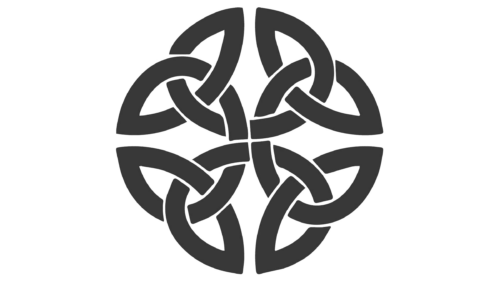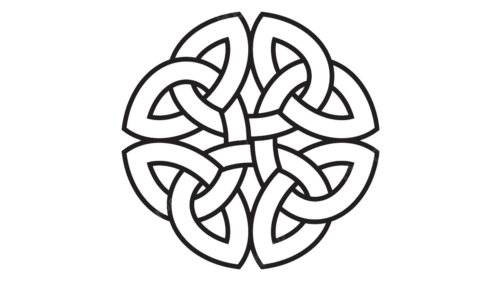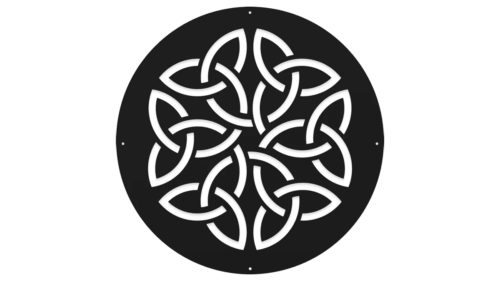Celtic symbols, a fascinating aspect of ancient European culture, have long held the intrigue of historians and art enthusiasts alike. These symbols, originating from the enigmatic Celtic civilization, are not just artistic expressions but are imbued with deep symbolic meanings. Among the plethora of Celtic symbols, a few stand out for their widespread recognition – such as the Dara Knot, symbolizing strength and destiny, and the Awen, representing divine inspiration. However, it’s crucial to note that while these symbols are significant, our focus will be primarily on another captivating symbol: the Celtic Knot.
The Celtic Knot, with its seamless and intricate looping, is a masterpiece of ancient artistry. This mesmerizing symbol has roots that intertwine with the very fabric of Celtic spirituality and worldview. Unlike other symbols that have a clear beginning and end, the Celtic Knot is unique in its endless design. This looping pattern, with no discernible start or finish, is a profound representation of the eternal nature of our spirit and the universe. It encapsulates the Celtic belief in the cyclical nature of life, where life, death, and rebirth are seen as a continuous and unending journey.
Historically, Celtic Knots found their expression in various forms of ancient Celtic art. They adorned the pages of sacred texts like the Book of Kells, an illuminated manuscript gospel book from the early medieval period. They also graced the stones of ancient Celtic crosses and monuments, standing as silent yet eloquent testimonials of a civilization deeply rooted in symbolism and spirituality.
An intriguing aspect of Celtic Knots is the mystery that surrounds their precise meaning. Due to the lack of comprehensive written records from the ancient Celts, much of what we understand about these symbols is derived from second-hand interpretations and scholarly conjecture. This enigmatic quality only adds to the allure of the Celtic Knot, inviting various interpretations and lending it a timeless appeal.
In considering the Celtic symbols meaning, it’s important to recognize their integral role in Celtic culture. These symbols were more than mere decorative motifs. They were a conduit for expressing deep-seated beliefs and an understanding of the cosmos that was profoundly spiritual in nature. The Celts viewed these symbols as a way to bridge the gap between the earthly realm and the spiritual, weaving their philosophy and worldview into the very fabric of their artistic expressions.
To summarize the key aspects of the Celtic Knot, here’s a list:
- Symbolizes the interconnectedness of life and eternity.
- Appears in various forms in both pagan and Christian Celtic art.
- Represents an unbroken life cycle with no clear beginning or end.
- Featured in significant ancient artifacts, like the Book of Kells.
- Open to multiple interpretations due to the lack of explicit historical documentation.
In essence, the Celtic Knot transcends its artistic boundaries to become a symbol deeply entrenched in mysticism and spirituality. Its representation of eternal life and the interconnectedness of all existence continues to fascinate and inspire, making it a timeless emblem of the rich and enigmatic Celtic heritage. This symbol, like a never-ending pathway, invites us on a journey into the depths of ancient wisdom and understanding, encouraging us to explore the mysteries of life and the universe.
The Celtic Knot Tattoo
The Celtic Knot Tattoo has gained immense popularity in contemporary culture, transcending its historical origins to become a powerful symbol of identity and heritage in modern body art. This adaptation of ancient symbolism onto the canvas of the human body showcases a unique blend of ancient tradition and contemporary expression. The intricate designs of the Celtic Knot, with their unbroken lines and loops, make for visually striking tattoos, often sought after for both their aesthetic appeal and deep-seated meanings.
In the realm of tattoo art, the Celtic Knot is often chosen for its representation of themes like eternity, continuity, and the interconnected nature of life. Each twist and turn in the knotwork is symbolic of life’s complex journey, with its myriad of experiences and connections. People often choose these designs to represent their personal beliefs, their heritage, or as a reminder of the interconnectedness of all things in the universe. It’s not uncommon for individuals to incorporate personal elements into the Celtic Knot design, making each tattoo a unique piece that reflects their personal story or spiritual journey.
Moreover, the Celtic Knot Tattoo serves as a bridge between past and present, allowing individuals to carry a piece of ancient Celtic heritage with them. For those of Celtic descent, these tattoos can be a powerful way to connect with their ancestry and celebrate their cultural heritage. However, the appeal of the Celtic Knot Tattoo goes beyond just those of Celtic lineage; it resonates with a wide audience due to its universal themes and stunning geometric complexity.
In essence, the Celtic Knot Tattoo is more than just body art; it’s a personal emblem that carries layers of historical, spiritual, and cultural significance. As a canvas of self-expression, it allows individuals to intertwine their personal narratives with the age-old wisdom and artistry of the Celts, creating a timeless piece that is both personal and universally appealing. Through these tattoos, the ancient art of the Celtic Knot finds a new lease of life, continuing to weave its story into the tapestry of modern culture.









